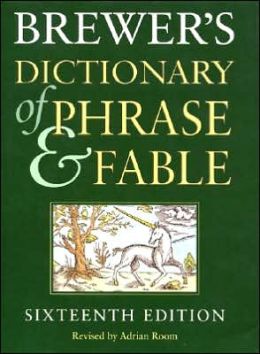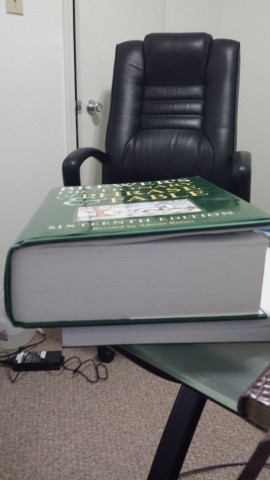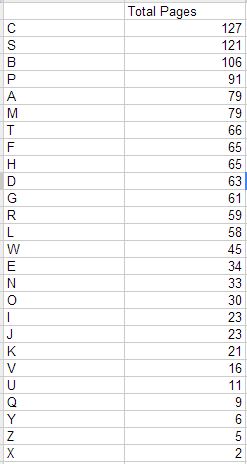I wrote about my 6 goals for 2014 last week, and the one I’ve been most looking forward to is reading all of Brewer’s Dictionary of Phrase and Fable. It’s been around since 1870, though you may not have heard of it because it’s more idiosyncratic than a typical reference book. I have the 16th edition, which was first published in 1999, although this printing is from 2003.
So I’ve owned this book for about 10 years now, and I’ve only ever read snippets of it. That all changes now, and I’m pretty excited to bring you updates on each letter. But for now, I’ll just start with the prefaces, introductions, and forewords. The latest one is written by Terry Pratchett, so you know we’re talking about something quality, even if you don’t yet know what it is. He describes Brewer’s as “a serendipitous book” because “you might not find what you’re looking for, but you will find three completely unexpected things that are probably more interesting.” Basically, it started as the Wikipedia of the 1870s, full of idioms, Norse gods, and peculiar stories about historical minutia. According to the introduction in my edition (by John Buchanan-Brown), it was instantly popular due to the 19th-century’s Romantic movement and the fact that a surge in literacy had created an intellectually curious public who lacked serious education. In his reference book, Dr. Ebenezer Cobham Brewer presented the results of academic scholarship (particularly about ancient folk customs, language, and beliefs–popular topics in the 1800s) in a simple, easily-accessible format for the general public. Of course, in the subsequent 15 editions, much has been edited, added, and cut. Pratchett writes that the 16th edition includes Gandalf but not “some of the duller nymphs,” which seems like a good compromise. I guess we’ll both learn more about the content as the year goes on!
This edition is 1298 pages, which means I need to read about 3.5 pages a day, so my first update (about the letter A, naturally) will have to appear before the end of the month (there are 79 pages in A). Here’s a list of how many pages each letter stretches, from greatest to least:
Though, of course, X being the least makes sense. Yesterday I read 15 pages because I didn’t have much to do and knew I’d be grateful later for a buffer. According to my spreadsheet, that means I’m 1.16% finished already! See? This year is going to be a cinch.


